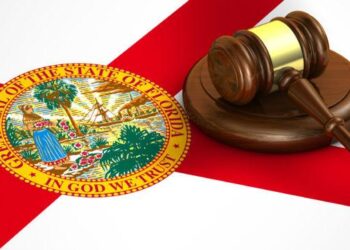By Meg McIntyre Special to the State House News Service
MARCH 14, 2022…..As cities and towns grapple with the question of exactly what can and cannot be required of solar developers looking to build within their borders, some municipalities are keeping a close watch as the Supreme Judicial Court weighs the issue.
A case the justices heard last Monday highlights the tension between the state’s aim of expanding renewable energy resources to become net-zero by 2050 and the longstanding tradition of local control in the Bay State. And it has shown that not all municipalities are on the same page when it comes to the best way to facilitate the switch to renewables, whether large ground-mounted solar fields are worth their environmental consequences and how municipalities can wield their local zoning regulations in relation to clean energy development.
At the heart of the case is a residential cul de sac that Tracer Lane II Realty is seeking to use as an access road for a one-megawatt solar facility planned in Lexington. The access road is in Waltham, though, and the city’s building inspector determined using it to facilitate the solar project would conflict with the local zoning code, which limits energy plants — including large-scale solar installations — to industrial zones.
‘Basically a Free-For-All’
In March 2021, Land Court Justice Howard Speicher issued a summary judgment ruling that Waltham’s prohibition of large-scale solar in residential districts “runs afoul” of the provisions of a state law known as Chapter 40A which says that no municipality shall “prohibit or unreasonably regulate” solar energy systems, except when necessary to “protect the public health, safety or welfare.”
As lawyers presented oral arguments in Waltham’s appeal to the state Supreme Judicial Court last Monday, Waltham attorney Bernadette Sewell argued the heart of the dispute lies in the need for a more specific definition of what constitutes “reasonable regulation” of solar projects.
“You have to look at what the consequences of a decision that would uphold the Land Court decision in this case might mean for municipalities in Massachusetts,” Sewell said. “If the court upholds the Land Court and says Waltham can’t stop Tracer Lane from using this residential lot as a through road, then what you’re saying is that it’s basically a free-for-all for solar installations.”
Tracer Lane attorney David Fixler maintained that municipalities do have the right to regulate solar developments, but they must do so on a “site-specific, parcel-by-parcel basis.” As such, he said the projects should be allowed “as-of-right” in any zoning district.
“The Legislature, in enacting the Solar Act in 1985, was prescient. Not only did the Legislature say that it’s important for the Commonwealth to invest in and promote renewable energy such as solar,” Fixler said. “They also foresaw that siting solar energy systems could prove to be challenging at the local level, and therefore, stated that the use of the land for such purpose is going to be protected and exempt from zoning regulation.”
Interest From Towns Far and Wide
Some conservation activists and local bodies see it differently. Several environmental groups and municipal boards, including the Shutesbury Planning Board, the Buckland Planning Board, the select board and planning board in Pelham, and the select board, planning board and conservation commission in Wendell, signed an amicus brief asking the court to preserve local zoning powers to regulate solar facilities.
The towns of Charlton and Warren also filed a separate brief in support of Waltham.
Environmental lawyer Meg Sheehan, a volunteer coordinator for the Plymouth-based conservation organization Save the Pine Barrens that filed the amicus brief, said the groups feel the solar provision is being “misapplied and misinterpreted.” She said the state doesn’t require solar developers to perform an environmental impact report, and residents are concerned about deforestation, soil erosion, groundwater contamination and disturbance of historical and cultural artifacts related to the in-ground installations.
Sheehan said the co-signers of the “friend of the court” brief recognize the importance of solar energy to combat climate change, but feel the technology would be put to better use in built environments, rather than in clear-cut forests or on agricultural land.
“There was no such thing as large ground-mounted solar in 1985,” Sheehan said. “All our documentation and legislative history shows that the solar provision was intended to protect and promote rooftop solar on residential lots, or residential developments, or on a small business parcel.”
The Land Court decision noted that large-scale solar projects are prohibited in 98 percent of Waltham, with only 2 percent of the city designated as industrial zones. Sewell disputed this statement, saying smaller “accessory use” arrays, such as those affixed to residential homes, parking garages and city-owned buildings, are allowed anywhere in the city.
“I’m not saying that there shouldn’t be solar installations in every single town. Obviously, we’re all sensitive to the need for solar installations,” Sewell said. “But there has to be some way for, or there has to be authority in the municipality to say, ‘When it’s going to be as big as the one that you’re looking at, it has to be in this area.’”
In 2014, the state Department of Energy Resources released a zoning model for regulating solar energy systems, and a number of Massachusetts cities and towns have since enacted solar-specific ordinances and bylaws.
Fixler argued that Waltham could have created such a bylaw, noting that Lexington has one specifying density requirements and mandating that developers provide a closure plan. Since Waltham’s zoning does not “expressly permit” solar projects and instead includes solar energy systems under “power plants,” Tracer Lane’s interpretation is that these systems are prohibited.
“There could be reasonable dimensional regulations, there could be setbacks, there could be screening, but the regulation has to be narrowly tailored, such that it can trigger a site-specific review instead of a categorical, upfront banning the use entirely,” Fixler said
Shutesbury passed a zoning bylaw addressing large-scale solar projects in 2016, which was amended in 2019 and 2020. Planning Board member Michael DeChiara said the regulation includes a provision requiring solar developers to mitigate the loss of carbon sequestration and forest habitat by preserving a plot of natural land four times the size of the installation.
DeChiara also pushed for legislators to pass a bill, S 2596, that would amend Chapter 40A to clarify municipalities’ right to reasonably regulate solar projects for the purpose of “preserving forested lands, agricultural lands, or wetlands” or “ensuring compatibility with municipal zoning.” The Senate version of the bill was referred to a study, which typically spells the end of the Legislature’s consideration of the idea for the session, but the House collected written testimony on the measure in advance of a March 4 hearing.
DeChiara said 206 of the roughly 330 municipal bylaws he was able to find online mentioned solar in some way. One of his concerns is that a narrow ruling from the Supreme Judicial Court would cause confusion for local officials responsible for applying these regulations.
“Does that mean that all the zoning bylaws around solar are considered null and void?” DeChiara asked. “Which, in my opinion, means that developers can just come in and say, ‘We want to do this, and the only way to manage it is with a special permit.’”
Biologist and forest preservation advocate Bill Stubblefield is helping develop a similar bylaw in nearby Wendell. Though much of the town’s forest is already under conservation, Stubblefield said the community wants to regulate where the projects can be built, how close they can be to water sources and how much forest land can be removed for their construction.
“One of the great values of forests of course is the ability to accumulate carbon. So that’s central to reaching net-zero, and there’s been a tendency to downplay how significant that might be,” Stubblefield said. The state’s 2021 climate roadmap law requires that Massachusetts reduce emissions by at least 85 percent from 1990 levels by 2050 with other strategies like carbon sequestration filling the gap so the state has net-zero emissions.
Stubblefield and DeChiara aren’t optimistic that the Supreme Judicial Court ruling will ultimately benefit municipalities.
“People who are advocating for reasonable regulations have been labeled NIMBYs, and the case for reasonable contextual regulation has not really been heard,” DeChiara said. “So I think there is an urgency behind it, but I don’t think we have receptivity.”









